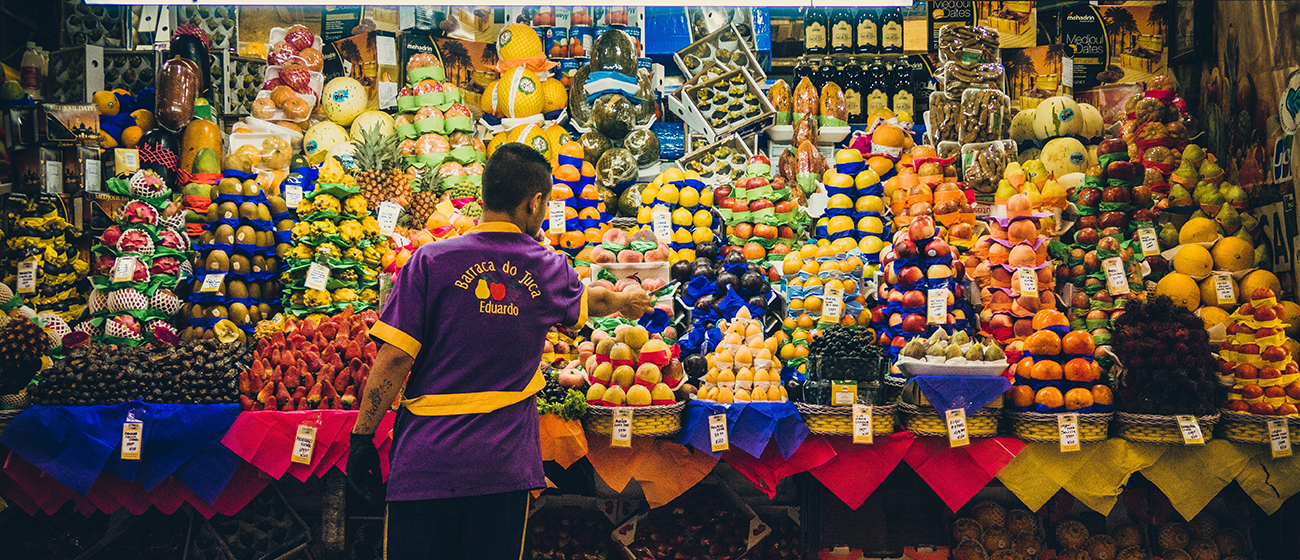
The Battle for Food Sustainability Will Be Won or Lost in Cities
November 28, 2018 — Blog
When we think about food sustainability, our minds go first to the countryside. It is there, after all, that farmers grow almost all that we eat.
But we’re making a giant mistake. For the first time in history, more than half of the world’s population live in urban areas. This number is expected to rise to 70 per cent by 2050.
Massive urbanization means that the battle to feed our growing global population, while keeping our earth safe and healthy, will be won as much in cities as the countryside. Today (November 28, 2018), at the Barilla Center for Food & Nutrition’s annual International Food and Nutrition Summit in Milan, we are publishing a new report “Food and Cities,” which offers constructive strategies to win that war.
More than a decade ago, a wide-ranging conversation with my brothers started us on a journey to understand how our family-owned pasta company could contribute to global policy-making. We saw global hunger on the rise: 821 million people worldwide do not have enough to eat. At the same time, obesity is worsening: more than 672 million adults are now overweight.
About one-third of our global food production is wasted and industrial farming is causing C02 levels to rise, contributing to extreme weather events such as floods, droughts, and storms. We came away determined to accelerate the global discussion around food challenges and this book is designed to feed this discussion.
Cities are the motor of economic growth and progress. They consume excessive energy and are sedentary places. Limited physical activity fuels obesity and chronic diet-related diseases – particularly among the poor sucked into slums in search of jobs.
Until recently, cities paid little attention to their food supplies. When mayors spoke about the environment, most focused on cleaning up transport and power supplies. They overlooked the importance of a healthy, sustainable diet.
As the new “Food and Cities” book demonstrates, many city leaders are waking up. In 2014, Milan opened an international dialogue between 30 cities in order to define and share a common ground for urban food initiatives. The result of this dialogue was the Milan Urban Food Policy Pact, signed in October 2015 by around 140 cities.
The Milan Pact recommends 37 actions to improve urban food policies. They range from requiring school canteens to serve healthy meals to encouraging markets for nearby farmers to sell their goods. All the initiatives strengthen rural-urban links and build ties between producers and consumers.
The concrete examples outlined in this book are varied and exciting:
- New York: In an effort to combat obesity, the city has mandated that chain restaurants include calorie labeling in their menus. This precedent-setting policy was followed by a ban on artificial trans-fatty acids from restaurant foods, the adoption of city-wide nutritional food standards. As a result, a noticeable improvement is visible in the city dwellers’ diets.
- Rio de Janeiro: The Brazilian city has reestablished organic farmer markets. Historically, travelling stall-holders and women of African slave descent sold food on the city streets. Urban sanitation refurbishments eliminated them. But a local NGO re-established organic markets and there are now 19 street markets in public places, selling mainly fresh products.
- Seoul: The Korean capital spent more than $2.5 billion from 2011 to 2016 on providing free eco-school meals to the city’s 705,000 students. Almost all the food is sourced from smallholder farmers. Officials analyzed the impacts of eco school meal program and found significant improvement of student diets and farmer incomes. They are planning to expand it to day care centers and other public facilities.
- Sydney: Australia’s biggest city boasts some of the world’s best supermarkets and restaurants, yet more than 17,000 residents go hungry. In response local charities such as the Salvation Army, OzHarvest, FoodBank provide free and subsidised food and food vouchers. The city itself funds FoodLab, designed to get low-income residents jobs in with small farmers and retailers.
The shift toward urban living is changing our relationship with food. Most of us who live in cities no longer see how food is produced. We just consume it. Yet achieving food sustainability in an era of rapid urbanization requires an understanding of how urban and food systems are intertwined.
The new book identifies ingredients that, when combined, can provide a recipe for making progress on fighting food insecurity, preventing health-related diseases, protecting natural resources and biodiversity, and preventing food loss and waste. It highlights the need to invest more in partnerships, public-private collaboration, infrastructure and services, and in empowering women and youth.
Much work lies ahead. Let us hope that the transformational change need will start happening in cities around the world.